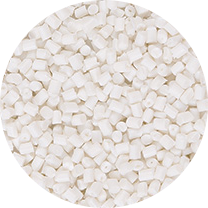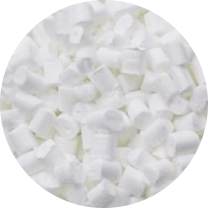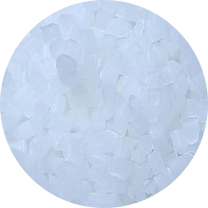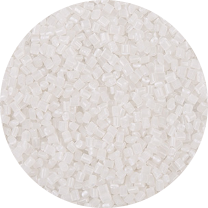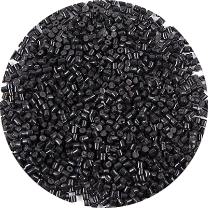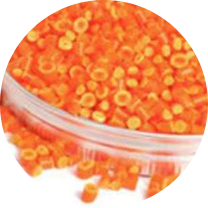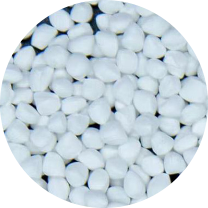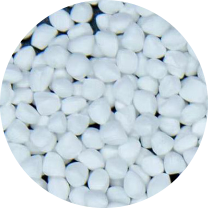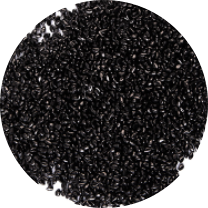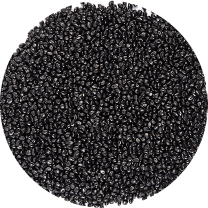Carbon Black Masterbatch Production and Processing Technologies: Key Processes from Extrusion to Molding
Introduction to Carbon Black Masterbatch
What is Carbon Black Masterbatch?
Carbon Black Masterbatch is a concentrated mixture of carbon black pigment and a polymer carrier, designed for easy incorporation into plastic products. It is primarily used to impart black color, UV protection, and electrical conductivity to plastics. The masterbatch format simplifies handling and processing, making it a preferred choice in various industries.
Importance in Plastic Processing
Utilizing carbon black masterbatch enhances the efficiency of plastic processing by providing consistent color and performance. It reduces the need for manual pigment dispersion, leading to improved product quality and processing speeds. Additionally, it helps in achieving uniform properties across batches, which is crucial for large-scale manufacturing.
Production Techniques of Carbon Black Masterbatch
Raw Material Selection
The selection of raw materials is critical in the production of carbon black masterbatch. High-quality carbon black with consistent particle size and surface area is essential for achieving the desired properties in the final product. The polymer carrier must be compatible with the processing equipment and the end-use application.
- Carbon Black: Choose grades with appropriate surface area and structure for the intended application.
- Polymer Carrier: Select carriers like LDPE, HDPE, or EVA based on processing requirements and end-use properties.
- Additives: Incorporate stabilizers, dispersants, or processing aids to enhance performance and ease of processing.
Extrusion Process
The extrusion process involves melting the polymer carrier and mixing it with carbon black under controlled conditions. This method ensures uniform dispersion of the pigment, resulting in a consistent masterbatch.
- Feeding: Precise feeding of carbon black and polymer ensures accurate formulation.
- Melting: The polymer is melted using heat and shear forces in the extruder.
- Mixing: High shear mixing ensures uniform dispersion of carbon black.
- Cooling and Pelletizing: The mixture is cooled and cut into pellets for easy handling.
Injection Molding Process
In injection molding, the carbon black masterbatch is blended with base polymer pellets and injected into molds to form plastic parts. This process is widely used for producing complex shapes with high precision.
- Preparation: Blend masterbatch with base polymer to achieve desired color and properties.
- Injection: The blend is injected into molds under high pressure.
- Cooling: The molded part is cooled to solidify.
- Ejection: The solidified part is ejected from the mold.
Dispersion and Quality Control
Dispersion Challenges
Achieving uniform dispersion of carbon black in the polymer matrix is challenging due to the pigment's fine particle size and tendency to agglomerate. Poor dispersion can lead to inconsistent color and mechanical properties in the final product.
Techniques for Improved Dispersion
To enhance dispersion, manufacturers employ various techniques:
- High Shear Mixing: Using high shear forces during processing to break up agglomerates.
- Surface Modification: Treating carbon black particles to improve compatibility with the polymer.
- Optimized Processing Conditions: Adjusting temperature, pressure, and screw speed to improve mixing efficiency.
PA-103 Multipurpose High Performance Stability Black Masterbatch
Applications in Plastic Products
Automotive Parts
Carbon black masterbatch for automotive parts provides UV protection and enhances the durability of components exposed to sunlight. It is commonly used in dashboards, bumpers, and trim pieces.
- UV Protection: Prevents degradation of plastic parts due to UV exposure.
- Color Stability: Maintains consistent color over time.
- Durability: Enhances the longevity of plastic components.
Packaging Materials
In packaging, carbon black masterbatch is used to protect contents from UV light and to provide an opaque appearance. It is commonly used in food and beverage containers.
- UV Protection: Shields contents from harmful UV rays.
- Opacity: Provides a solid black appearance.
- Barrier Properties: Enhances the shelf life of products.
Electrical Components
For electrical components, carbon black masterbatch for conductive plastics imparts electrical conductivity, reducing static buildup and enhancing safety.
- Conductivity: Provides a path for electrical charges to dissipate.
- Static Dissipation: Reduces the risk of static-related issues.
- Safety: Enhances the safety of electronic devices.
FAQ
What is the optimal concentration of carbon black in masterbatch?
The optimal concentration varies depending on the application. Typically, concentrations range from 20% to 50%. Higher concentrations provide deeper black color but may affect processing and mechanical properties.
Can carbon black masterbatch be used in food packaging?
Yes, but the masterbatch must comply with food safety regulations. It is essential to ensure that all components are non-toxic and approved for food contact.
How can dispersion issues in carbon black masterbatch be addressed?
Improving dispersion can be achieved by optimizing processing conditions, using high shear mixing, and selecting appropriate additives to enhance compatibility between carbon black and the polymer.
prevNo previous article
nextCarbon Black Masterbatch in the Plastics Industry: Versatile Applications from Automotive to Packaging


 English
English 中文简体
中文简体 한국어
한국어 عربى
عربى
